Fashion from the 1940s includes several classic elements that you can incorporate into a modern wardrobe. You can dress in the 1940s American wartime look as well as the post-war late-40s look. All you have to do is add a few key items to your wardrobe and know how to pair them together. You'll be rocking a fabulous vintage look in no time!
Steps
Before 1945
-
Be adaptive. Here are a few trends that were directly affected by materials rationing.
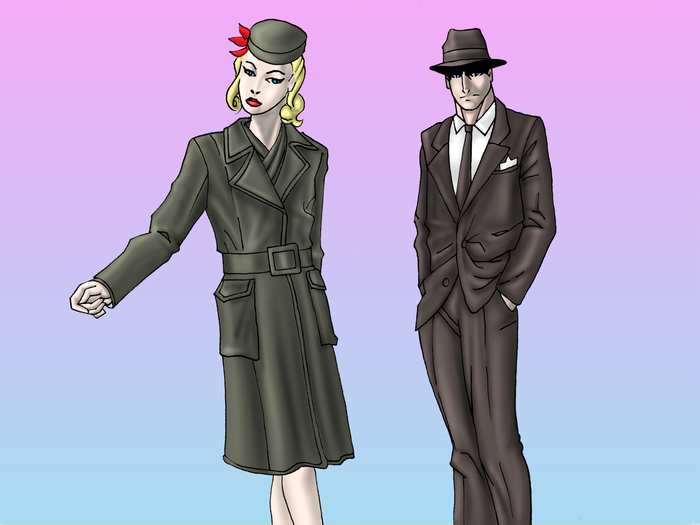
- Remake what's old. Both men and women reused and retailored outfits left over from the 1930s. To accommodate current trends, women would shorten the classic drop-waist of the '30s silhouette to rest at the more fashionable natural waist. Hemlines were even higher than before! Additionally, as more American men were drafted, women at home remade their left-behind clothing into slim-fitting pants, blouses and jackets to be more usual for the more active lives they had to lead.
- Utility. Less fabric became the way to go. Less buttons, pleats and zippers were used. Women's hemlines were lifted to save on fabric, and their garments kept to a slim cut with little embellishment. For the first time women began wearing pants in masses to increase work safety.Musicians and mobsters wore wide, elaborate zoot suits, but most American men could buy "victory suits" that offered no rolled cuffs on the trousers, no sleeve buttons, and no patch pockets, in addition to shorter jackets and narrower trousers. Waistcoats or vests were abandoned in favor of double-breasted suits jackets.
- Wear plain colors. Brown and green dyes were heavily rationed for use in military uniforms. In response, deep maroon, gray, or undyed white or beige fabrics were available for popular use. Bright neon colors were not seen in clothing because chemical dyes were not used.
- Give up unnecessary undergarments. Girdles were made scarce by rubber rationing during the war. In response, most women's skirts and pants featured elastic waistbands that required no fasteners and could fit a variety of sizes. Undershirts had fallen out of popular fashion for men during the strain of the Great Depression, and after Clark Gable was pictured without one in the 1934 movie It Happened One Night.
- Get creative. Perhaps the most iconic item to be rationed during the war was women's stockings. After both silk and nylon became scarce, women would paint their legs a slightly darker tone and use black liquid eyeliner to draw the usual seam up the back of the leg to give the appearance, from far away, of wearing stockings.
-
Play up the wartime silhouette. As women's skirts and dresses became shorter to save on fabric, legs emerged as the most prominent and desirable feature of the early-1940s figure. Additionally, as men and women's clothing adhered to slim cuts throughout the body, shoulder pads became popular for both sexes as a way to add interest to the silhouette.
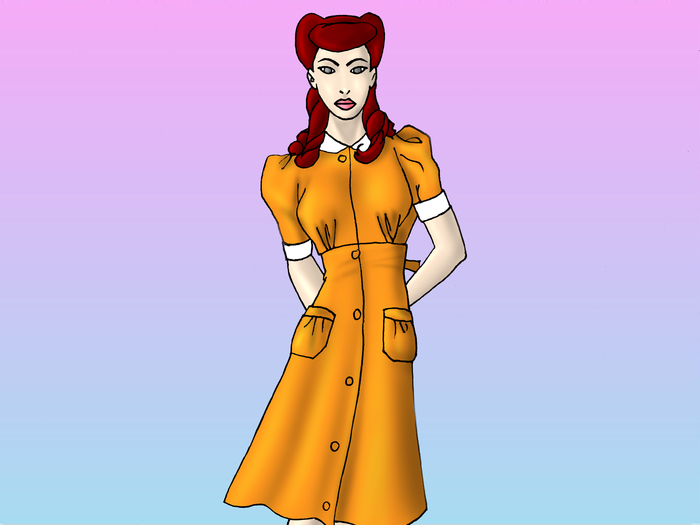
-
Wear war-appropriate shoes. Because rubber was in short supply, wooden pumps and wedge heels gained popularity with American women. To save on shoe leather, peep toes and T-straps became fashionable. Flat, utilitarian shoes were also a practical everyday choice for women working in factories.
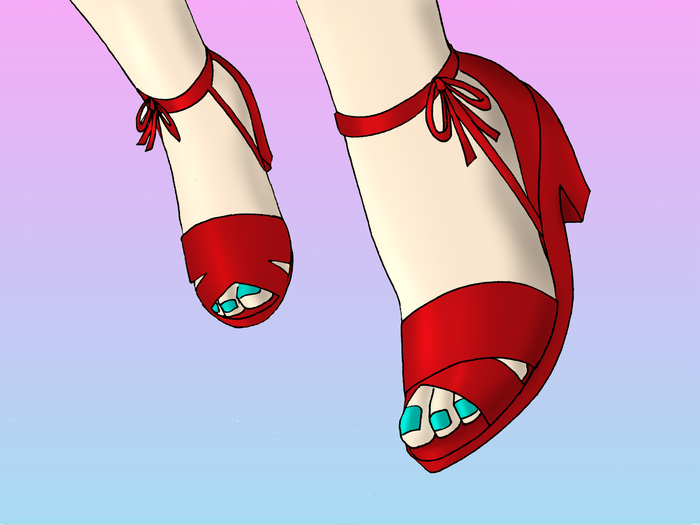
-
Pay more attention to hair. Though men's haircuts retained much of the slick look they'd had during the 1930s - or turned to buzz cuts, for enlisted soldiers - women used hairstyles as a way to remain fashionable in spite of textile rationing. Trims were expensive and short hair was hard to tie back at work, long locks were in style.
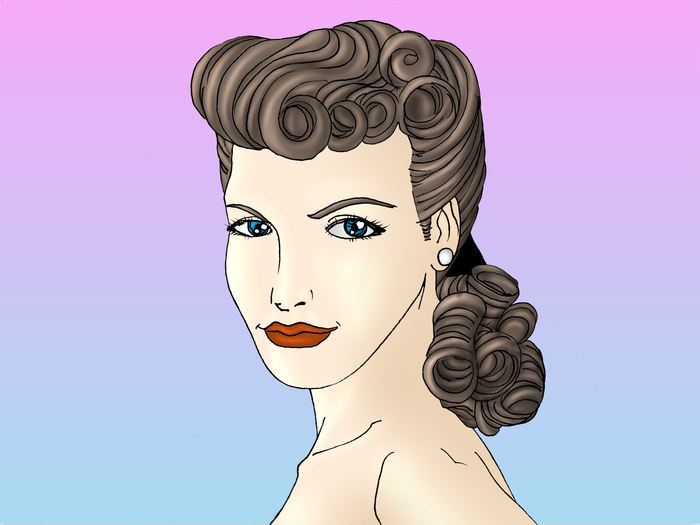
- The hat market in the 1940s was dominated by Europeans , American women began to favor smaller hats or no hats at all. Complicated styles -such as victory rolls, pin curls or finger waves - were popular, as were ribbons, headbands and other embellishments.
-
Feminize an austere look with makeup. Bold makeup was another avenue by which American women sought to add a feminine angle to plain clothing. Eye makeup was kept fairly tame, with mascara and eyeliner on the top lid. Eyebrows were arched more naturally, but still had an arc that could only be achieved with tweezing and shaping. It was still common to fill in lipstick beyond the lip line, especially to emphasize the curve of the “Cupid's bow” of the top lip to more of a gentle arc. Bright, matte lip colors, such as coral pink or fire-engine red, ruled the day. Tangee lipstick, the original color-change lipstick, is still available. Nail color generally matched a woman's lipstick color.
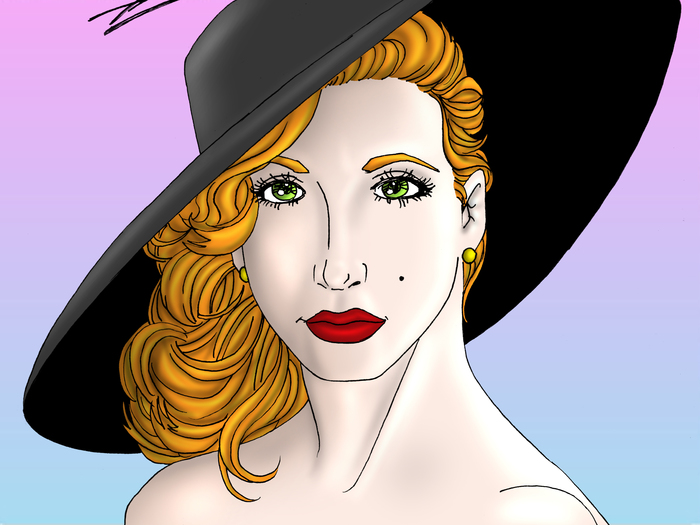
-
Add accessories. Gloves were less essential to complete a woman's look than they had been in the 1930s (and less than they would be again in the '50s), but remained a popular staple. Handbags and pocketbooks were fashionable, as well. For men, a fedora tipped at a jaunty angle was the hat of choice.
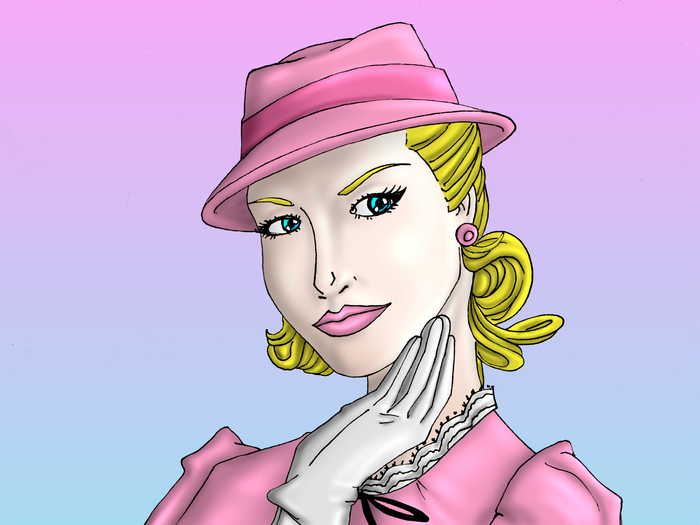
After 1945
-
Dress for luxury. As America eased into post-war prosperity after 1945, fashions became more elaborate and indulgent again. Here are a few examples of this trend.
- Imitate the "New Look". Christian Dior's "New Look" silhouette, introduced in 1947, was a direct response to the wartime austerity look. It featured a tailored, pleated jacket with a nipped waist and a peplum (a small skirt emphasizing a narrow waist and wide hips) that flared out into a mid-calf length, full skirt made up of several folds. Instead of the leggy wartime look, the New Look emphasized the bust and hips in an hourglass figure. The outfit was usually completed with a hat, jewelry, gloves and a handbag or pocketbook, and it came in a variety of colors.
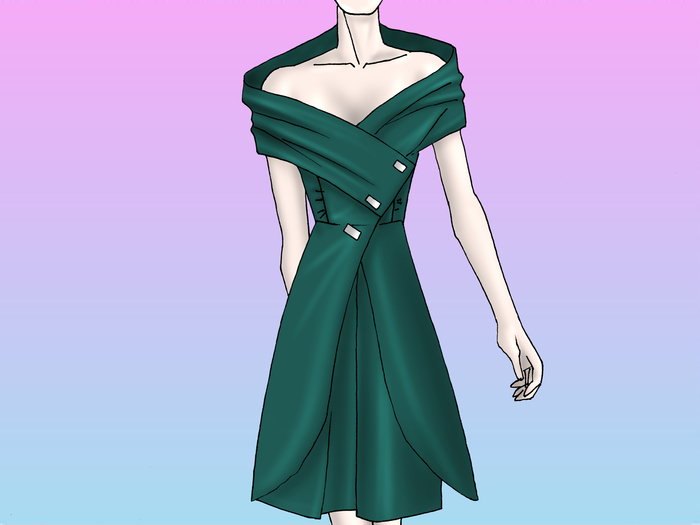
- Wear cocktail attire. Cocktail attire, billed as more elegant than daywear but a step down from formal wear, became popular in the late 1940s for informal or early dinners. For women, this meant wearing dresses in sumptuous fabrics with a mid-calf or knee-length hem and including elements such as a low-cut bodice, a short bolero jacket, or a frothy skirt enhanced with tulle or chiffon. Additionally, high heels became higher and wedges were less popular.
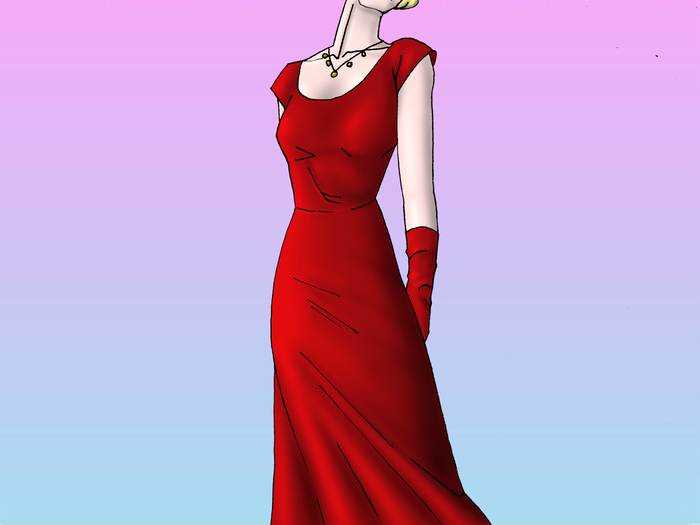
- Chose a period-appropriate suit. Menswear again became generously fitted after the war, featuring wide-leg trousers, shoulder pads and double-breasted jackets. Broad lapels and bold, coordinated accessories were promoted by Esquire magazine as the "Bold Look." Colors remained elegant and muted, with charcoal gray being popular.
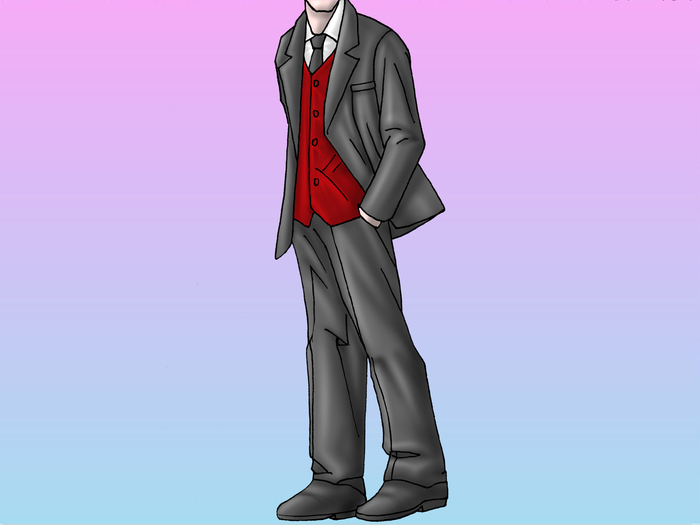
- Imitate the "New Look". Christian Dior's "New Look" silhouette, introduced in 1947, was a direct response to the wartime austerity look. It featured a tailored, pleated jacket with a nipped waist and a peplum (a small skirt emphasizing a narrow waist and wide hips) that flared out into a mid-calf length, full skirt made up of several folds. Instead of the leggy wartime look, the New Look emphasized the bust and hips in an hourglass figure. The outfit was usually completed with a hat, jewelry, gloves and a handbag or pocketbook, and it came in a variety of colors.
-
Bring back the complicated undergarments. After the war and with the advent of fuller skirts, structural undergarments were necessary once more. Garters were used to hold up stockings, girdles helped achieve the popular "nipped waist" look, and petticoats were sometimes necessary to fill out skirts. Women were reluctant to give up the pants and shorts they'd enjoyed during the war, and retained them in slimmer, more feminine cuts. Sporty sweaters and jackets were fashionable for men.
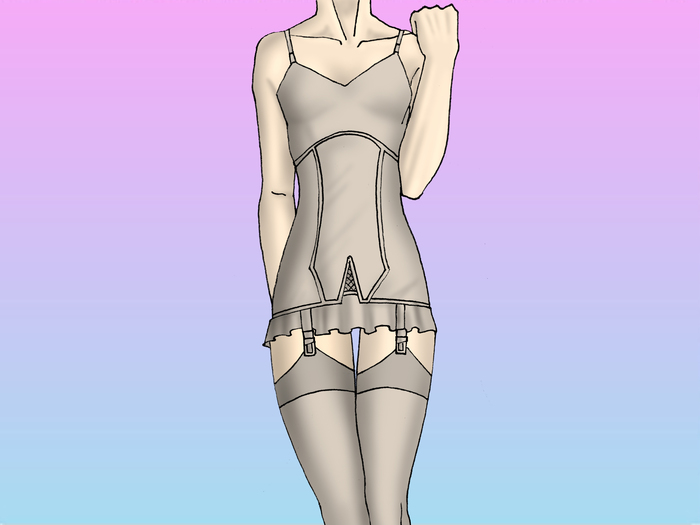
-
Style hair more loosely. In response to the longer locks of the war, women again cut their hair shorter and kept it curled, or added bangs. Men wore hair with a "wet" look, achieved with pomade or cream, and combed back from the forehead or up into a pompadour.
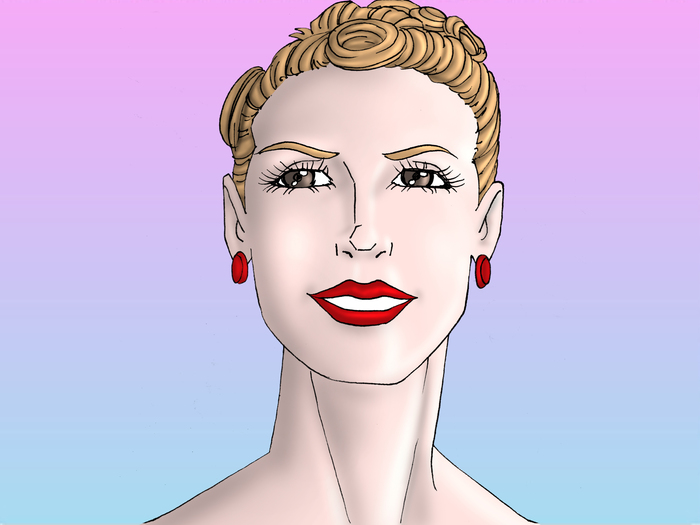
-
Complete a feminine look with makeup. Postwar makeup remained similar to wartime makeup, with the exception of a less-bold lip. Liner and color followed a natural lip line, instead of the wartime "Cupid's bow" look. Instead, bright nail colors became popular.

-
Add glasses. Horn rimmed glasses came out in 1947 and have been stylish ever since. Eyeglasses became more “cat's eye” shaped for the ladies.

-
Favor sportswear. As middle-class Americans began to enjoy more leisure time, sportswear became a popular element of US fashion.
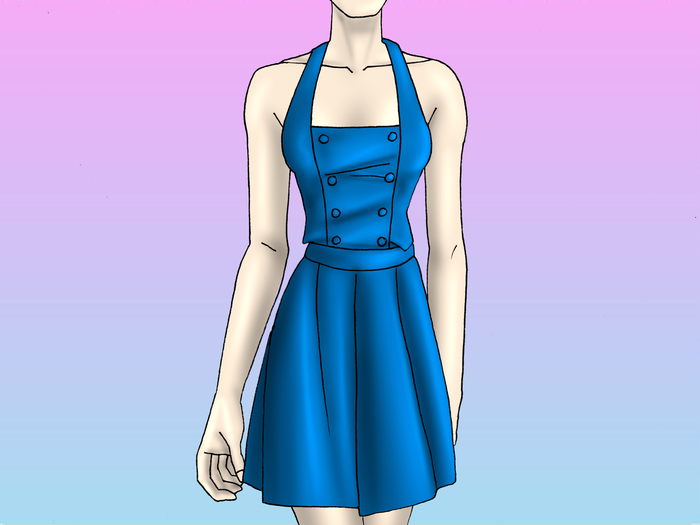
-
Choose Hawaiian themes. The boys were back home and they came with souvenirs. This led to a popularity in island themed fashions and home décor. Hawaiian themed parties were popular by the movie stars during the war and now the rest of the nation was catching up. Tropical prints were all the rage. Hawaiian shirts were the backyard BBQ favorite of the fellas.

Tips
- You may have difficulty locating items from the '40s since it was many decades ago now. Try locating a company that bases its designs on styles of that era or become clever at recreation through sewing, pinning and cutting.
- Search online auctions, thrift stores or estate sales for genuine 1940s items, as well as books or sewing patterns.
- Get inspired. Take inspiration from 1940s movies. Search for items by popular designers of the period, such as Edith Head, Oleg Cassini, Christian Dior, Cristóbal Balenciaga, Madelaine Vionnet and Coco Chanel.
- Use your common sense, as many of these make up styles look best on a certain type of face, which the individual must consider before incorporating any such style into her own unique "look."
- Remember that just because it's 1940s doesn't mean it is appropriate for you to wear on any occasion. However, current fashion times do allow us to get away with many choices, so be your own arbiter of fashion.